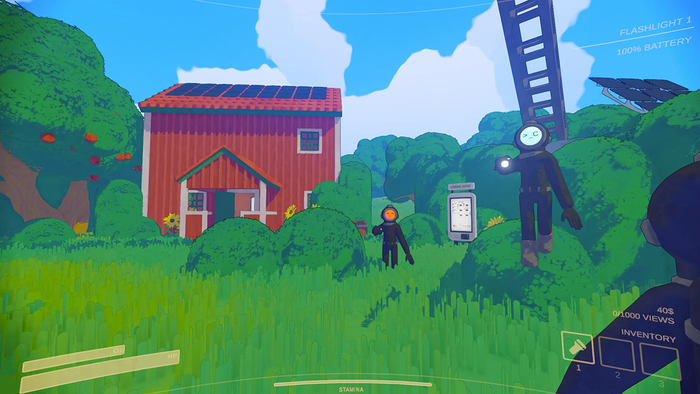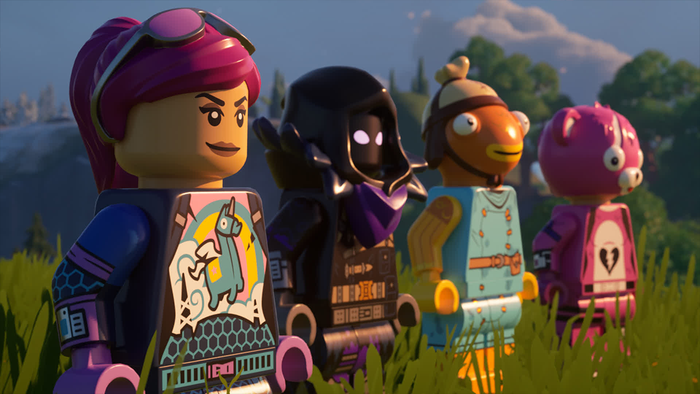
Featured Blog | This community-written post highlights the best of what the game industry has to offer. Read more like it on the Game Developer Blogs.
Discussing the freemium and retention systems design of the most played game in the world: League of Legends.


Why write this article?
Recently my co-workers convinced me to try League of Legends… I was pretty apprehensive at first but it didn’t take long before I was a level 23 summoner (still 7 levels to go), playing during lunches having my face (figuratively and literally) melted off and loving every moment of it.
I began to wonder how/why this game is so profitable but manages to offer so much content for free. This interest was fueled even more by my previous article where I discussed the systems design of the most popular and profitable mobile game currently on the planet – Candy Crush Saga. While Candy Crush focuses mostly on impulse buys and consumable items, League of Legends is a hardcore PC game with a similar but at the same time, very different strategy. I wanted to sample both ends of the spectrum to see what made these blockbuster titles tick.
So without further ado, let’s discuss why freemium feels so-damn-good in League of Legends.
The Game
About League of Legends
When you look at the the overall experience of League what you see is another shining example of a game design cohesively matched and working with its retention and monetization systems. At the same time, Riot has managed to take the conversion directly out of the game and place it separately into the in-game store. They typically do not rely on impulse purchases, but instead focus on player engagement, retention and build conversion through player attachment/emotion.
League of Legends is a competitive freemium title built with gameplay specifically in mind which has earned it the title of the most played game in the world.
Build Community: The Most Important Rule
The first thing you need to remember is that League of Legends is a competitive and community driven game. In a competitive game, free players need to be on the same balanced playing field as premium players. Creating too many (if any) pay-to-win scenarios drives off your free players and stifles the growth of your community. This reduces your monthly active users and drives down potential conversion.
The game is fair and balanced between freemium and premium players and its monetization strategy is really built with that in mind.
Random Fact: League of Legends is an eSport and has even been identified as such by the U.S. government. Professional players can now more easily immigrate to the United States when drafted by professional teams.
Let’s Talk More About Balance
Typically the game is a level playing field, with the exception of some champion balance issues the game itself offers very little to no “Pay to Win” scenarios. On top of this, it is important to note: Any impactful gameplay item, boost or champion can always be purchased using the free soft currency (Influence Points). Only timezone transfers, name changes or vanity items require real world money conversion.
By ensuring that anything that can affect gameplay is accessible to all players, Riot further ensures players are evenly matched together.
It’s a design formula that works; as of late 2012, League of Legends is the most played PC game in the world with an average of 12 million daily users and well over 32 million monthly active users.
Champions, Lots of Champions
League of Legends has a lot of playable champions, 114 and counting to be exact. Every playable character is unique, with different skills and play styles. If variety is the spice of life, then League is definitely full of life.
On top of being a systems driven game, champions are where League gets most of it’s metagame. There is an endless possibility of hero match-ups in casual and competitive play. Heroes are continually updated, tweaked and balanced to keep things interesting.

I hope you like champions – there are only a few to choose from…
Approachability
Character design can range from ultra cute to hyper sexualized to something from your deepest, darkest nightmares. Broad appeal is essential to increasing potential player base and retaining players. Typical character design leans more toward core/hardcore gamers but the variety does exist!

Cute and Cuddly – Hyper-Sexual – Born of Evil

Special Note: Teemo maybe cute, but he’s the spawn of Satan on the battlefield.
Every Champion has a Backstory
As I mentioned in my previous article, story is important regardless of how shallow or deep that story may be. Stories can help drive player engagement and will ground the player into the world.
Every single one of the 114 champions in League of Legends has a fleshed out back story tied to their character which is easily accessed via the champion overview. While this is a small touch of detail, it is certainly an important aspect to the overall experience. The story helps engage the player and build attachment to the champion. This emotional connection / attachment helps fuel conversion when the player wants a champion or has experienced a champion and then wants them later. The story makes the champ additionally memorable.

Core Conversion Systems
Currencies
League of Legends offers two currencies, both serving unique purposes while also working together in the game’s economy.
 Influence Points
Influence Points

Influence Points are soft currency gained from playing the game. Any player that competes in a match is awarded this currency regardless of victory or defeat. Winners are rewarded with slightly more points but it is important to note whether a player wins or loses, that both are rewarded for playing. By rewarding both players, Riot is ensuring that the sting of defeat is mostly left inside the arena. Frustration is diminished significantly and player retention is easier to maintain.
 Riot Points
Riot Points

Riot Points are League of Legends premium hard currency. This currency can only be obtained from converting real world money. This currency let’s the player buy most, (but not all) of the games features.
An Introduction to Spending
Upon hitting level 3, Riot grants 400 free RPs to the player to spend. 400 Riot Points doesn’t buy much but introduces the player to the dual currency system. This introduction also shows the player that it takes a lot less Riot Points to purchase than grindable Influence Points.
The free introduction is basically a value proposition to the player using a gift.
Premium Currency vs. Grind Currency
Converting money does have its advantage: Saving time. When a player converts their money to Riot Points they can instantly purchase any of the games champions, skins or consumable boosts. There is no need to grind the IP – as real world conversion instantly grants access to the main content of the game.
Converting real money also lets the player focus on spending their Influence points on stat boosts (known as runes). Runes can only be purchased using soft currency and as such, if the player can focus the majority of the free currency here, they can max their champion potency a little faster.
Summoner Whale Items
Skins: This in my champion, there are many like it, but this one is mine.
Every champion in the game has generally between 2 to 5 unique skins which will change the way the champion appears on the battlefield. Skins typically are amusing and often have pop culture references buried in them. Skins prices vary, with the odd feature skin popping up from time to time. Skins can only be purchased using premium currency.
Skins are purely a vanity item and offer no real impact to the gameplay. Purchasing a skin is a great example of League of Legends ability to monetize the player using emotion.

Video Game Sona (Left) & Pax Jax (Right)
Example: If you (the player) have a favourite champ, and have been playing it for a while, odds are you are somewhat emotionally invested into that champion. Buying a skin is a way to keep that champion fresh.
Additional Rune Pages


This is an upgrade for the true League of Legends “whale” or pro player. League only lets a player have 2 rune pages on their profile. True min/maxers would want to have greater fidelity optimizing their champion build. With a huge variety of rune combinations available a player could maximize their stats depending on the competition. Building rune combinations takes time, so selecting a preset is much faster when joining a game.
Summoners can purchase additional rune pages for:
a) The IP cost of an expensive champion (6300)
or
b) For the small real world cost of 590 Riot points.
or
c) In bulk for a reduced cost of Riot Points
New Champions
League of Legends sees a new champ, designed with new skills and backstory released usually every 3-4 weeks. New champions come at an increased cost for the first week to further promote first day purchases from whale customers. After which the cost is reduced for everyone else.
On top of helping drive conversion, new playable characters also drive monthly retention. New content will always bring back customers who want to see what it is all about. Each new champ usually comes with new gameplay mechanics unique to the game.

Meet Lucian the newest, latest and greatest hero to be arriving to League of Legends soon.
Special Note: Sometimes, and this may or may not be on purpose, new champions will be more powerful than the existing characters. The new champ will usually be balanced some time after release. More powerful, first day release champions can help drive conversion (pay to win) scenarios but need to be addressed quickly
Consumables
League, like most other freemium games contains consumable power-ups. These consumable items are used to help the player in their leveling and Influence point grind.
Boosts
Boosts essentially allow the player to buy time and avoid the grind. There are 3 types of boosts available for purchase.
 IP Boost
IP Boost
Gives the player a 200% influence point boost for every game played within the consumable duration time.
 IP Boost (Wins only)
IP Boost (Wins only)
Generates a 200% bonus to influence points earned per game won.
 XP Boost
XP Boost
Increase XP gained by 200% for a limited time, allowing the player to level up their summoner account more quickly. Leveling up faster allows the player to more quickly access ranked games at level 30. This consumable is no longer used once the player hits level 30.
Timezone Transfers
Moving, want to play with a friend on a different part of the world? You can buy this one time use item to switch your account timezone.
Rename: Got a bad rep, or just tired of your summoner name?
Rename your profile without having to create a new account for a small fee.
Weekly Sales
Every week certain champs and skins will appear for sale, usually for up to 50% off. This sale price only applies to the hard currency in the game. Sales exist to entice players who are difficult to convert and to further monetize players who spend often.
Sales encourage the player to save time and to spend money rather than grinding to the full Influence point value of a character. Sales promote basic impulse spending.
Value in Bulk: Bundles and Upselling
Bundles

Closer to a whale items, bundles allow players to buy multiple champions and skins at once for reduced cost. Bundles also switch from week to week and are easily seen on the top slider of the store page.
Riot Point Bulk
The more money you spend, the more points you get per dollar spent. The player gains value by spending more money.

Boosted Boosts

Even boosts have better efficiency and dollar value per tier.
Retention Systems
Daily IP Boost Retention
Every 24 hours a summoner is awarded an additional 150 IP for winning a match. While this value isn’t very big, it drives retention up and increases the daily active users in the game significantly. Larger retention means larger chance of receiving additional conversion on top of this, earning the reward may require extra player engagement since they must win in order to receive it.
The player may have to play extra rounds in game to receive the bonus. More time in game, means more chances for possible monetary conversion.
Weekly Champion Cycle
So you don’t have a lot of playable characters and you recently played against a champion you really want to try? He/she/it is just too expensive to buy and you don’t want to waste your hard earned points of something you might not like?
Lucky for you Riot Games offers a weekly champion cycle. Each week Riot cycles a new selection of 10 champions to try. This gives the player a small sample of new champions to play around with.
This weekly champion cycle accomplishes 3 core freemium needs:
Retention: Gives the player a reason to return every week/day to try a new champion.
Engagement: Lets the player enjoy a champ they may have otherwise not played.
Conversion: Once the week cycle runs out, the player may not want to grind the Influence Points over the next week, and may just want to access that champ immediately so they may convert real work currency
Player Progression
On top of all the content, start to “finish” League is full of player progression. From leveling up to unlocking content or collecting champions; players always have something to strive for. General progression is easier to list in bullet point form and goes something like this:
Play your first matches against the computer
Level up enough to play online
Keep leveling up to unlock new gameplay types
Purchase your first champion
Keep playing and leveling up
Unlock more champions
Hit level 20 to unlock the top rune tiers
Get all your runes
Hit level 30 to compete in ranked games
Keep unlocking champions
Increase your ranked status
And so on, endlessly….
Community Integration
Simply put, If you have friends that play, odds are you will play. Being that league is a community driven eSport, Riot has integrated social features to easily get friends together and take it out on each other in the battle field. Easily being able to see friends online, spectate their games and contact them is fundamental to maximizing player engagement and to help retain players through social means.
What I would add/change:
After some discussions with people about my previous article, I had some ask me what I would do differently, so at the risk of putting myself out there, here are a couple of things I would love to see added to the League monetization model.
Build Your Own Bundle (Monetization)
I would design a system that would allow a player to bundle together any champion in the game. The more heroes bundled, the cheaper they all become (within a cap of say 30%). This would allow players who aren’t quite willing to wait for a sale, commit to purchasing multiple heroes at once based on what they deem to be valuable to them. Values of the heroes in the bundle would be scaled accordingly to their cost so not to risk abuse of the system.
Create A Bundle would accomplish:
Greater immediate conversion on those midground players waiting for that “right bundle”
Offer another conversion alternative to the player
By making the cost reduction cap at 30%, traditional 50% off sales would still retain their value and encourage impulse spending. Bundling your own selection would also curb the issues of current sales where the player may already own champions in that bundle (making it less valuable).
Wishlists
I don’t monetize easily – I wish League offered the ability to create wishlists similar to Amazon or Steam. If a champion I want goes on sale, I am notified. Knowing it is on sale, and being reminded would help drive my potential for lower end base conversion.
Summary
This concludes my critical lens of the League of Legends freemium design. While I find the system rewarding, fair and balanced, I’m curious to hear if you agree! If you like the article, feel free to read some of my other work, visit my site and even follow me on twitter!
Thanks for the read!
Twitter: @Slafram
LinkedIn: http://www.linkedin.com/in/sheldonlaframboise
Site: freetoplay.ca
Read more about:
Featured BlogsAbout the Author(s)
You May Also Like








